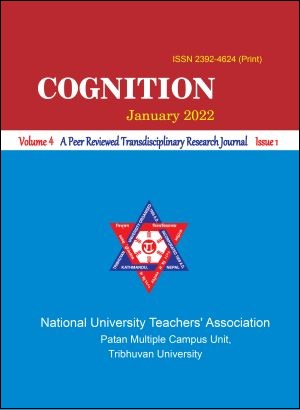Politics of Placemaking and Positions of the Musahars at Jamdaha-Golbazar
DOI:
https://doi.org/10.3126/cognition.v4i1.46448Keywords:
culture, political identity, placemaking, settler, historical memoryAbstract
A certain unity of place and people have been long assumed in the anthropological concept of culture. The association between a particular geographical territory and a cultural group has been studied by classical anthropologists. The taken-for-granted logic was that the Madhesi live in Madhes, 'the Nuer live in Nuerland', 'the Andamanese' are the indigenous peoples of the 'Andaman Islands, and the Musahar live in Musahari. The places are named behind the name of the first settler. The clearest illustrations of these kinds of thinking are the classic 'ethnographic map' that purported to display the spatial distribution of peoples, tribes, and cultures. Place itself becomes a neutral grid on which cultural differences, political identity, historical memories, and societal organizations are inscribed. This assumed isomorphism of place and culture results in some significant problems. The place is not natural, rather it is cultural construction of peoples and it has no singular narratives. This article represents a modest attempt to deal with the issues of interrelation between people and place, displacement and crisis of place-based identity at Golbazar-Jamdaha in Siraha. The Musahar, the first settler of the Jamdaha, are not only marginalized from socioeconomic positions but also displaced from the placemaking process. The history of the Musahar and their places have been refigured in favor of the dominant community. The fundamental question is on the anthropological practices of captivating the association of a culturally singular group and its territorial location as natural. For me, places with cartography are always imagined in the context of political-economic privileges that have a logic of their own.




